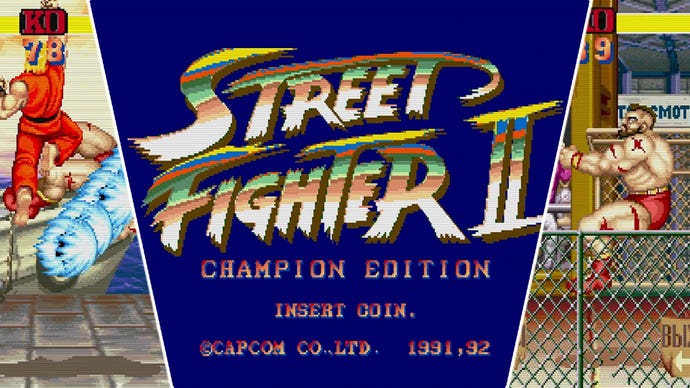Why Street Fighter 2's illegal arcade knock-offs are a key part of its legacy
30 years after its release, we look back on what may be Street Fighter 2's biggest legacy; myriad legal (and illegal) spin-offs.
It seems only fitting that my first exposure to a hacked Street Fighter 2 cab would be at the fairground that rolled into my local park each summer. After all, the entire site was a legal grey area: rides adorned with poorly airbrushed depictions of Disney characters and action stars; rigged sideshows rewarding the lucky few with their choice of knock-off superhero plushie; the origin of the ‘meat’ from the burger vans.

As an aspiring teen, I’d navigate through this sea of flagrant copyright infringement and dubious food hygiene standards for the real star attraction: the arcade. If you’ve never had the pleasure, a fairground arcade was typically a compact steel cabin with a claustrophobically low ceiling, approximately one billion cabochon lights, and more coin-ops, fruities and 2p shove machines crammed into its modest volume than absolutely necessary.
I’d never expect much from its generically branded cabs. If you were lucky, you’d find an Electrocoin Unigamer unit housing WWF Wrestlefest with two working buttons. If not, a repurposed video poker machine with a knackered monitor running BurgerTime.
One year — let’s call it 199X — I thought I had struck gold. This was the era of Street Fighter 2: Champion Edition, where our dreams of playing as the four bosses (Punchy, Slashy, Eyepatch McScar and Magic Communist) were finally a reality. And here it was, nestled in the back corner of Wilson’s Crazy Casino*.
At least I thought it was.
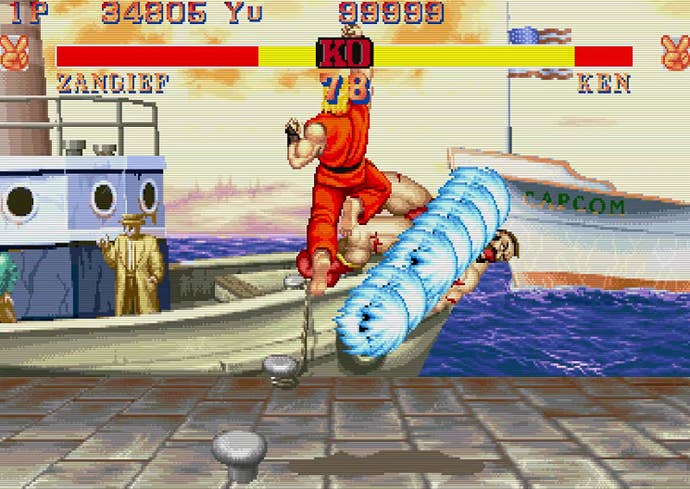
From the moment I dropped my first 20p something was clearly amiss. The colours of the Street Fighter logo, switched up to a fetching green-to-blue gradation for Champion Edition, were instead a garish, seemingly corrupted mess.

It just got weirder from there. Within seconds of my first bout, my Ryu had dished out mid-air homing Hadoukens, turbo-charged hurricane kicks and dragon punches that covered the entire width of the arena. Meanwhile, my CPU opponent decided they’d had enough of being a fireball-spewing E. Honda and, mid-fight, transformed into Blanka instead. Actually, Dhalsim. No, Ken. Chun-Li, then. The indecisive AI eventually settled on a vicious Guile and I, still dumbfounded by what was unfolding, was promptly crushed by an endless torrent of Sonic Booms.
It all happened so quickly, too. It was less “time flies when you’re being pummelled,” more, “you got Benny Hill in my Street Fighter”. Just comically fast.
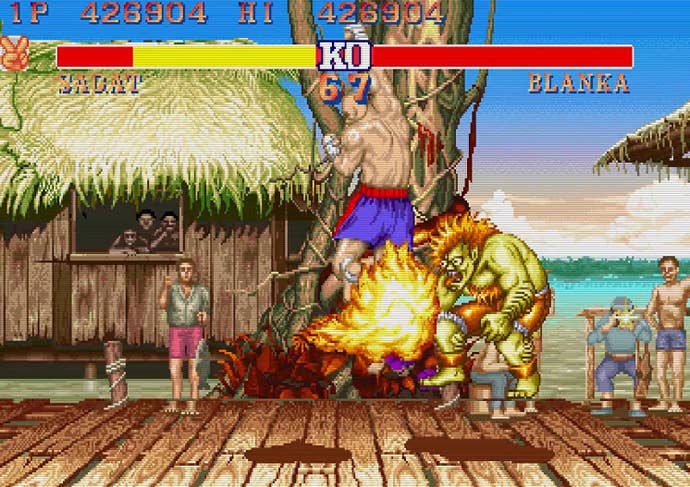
“Well,” I pretend to remember thinking to myself, “that was crap.” Street Fighter 2 usually felt so finely tuned, so wonderfully balanced. This felt like every demented idea from a dev’s five year-old had been chucked in, balance be damned. I opted not to blow any more of my limited funds on it, instead choosing to observe several other unfortunates suffering a similar fate. Nobody made it past the first opponent.
Somehow, in an age where the internet wasn’t A Thing, my more learned friends had already caught wind of this bootleg. Depending on who you asked, it was either Rainbow Edition or Blackbelt Edition. I suggested Fundamentally Broken Edition, but was shouted down.
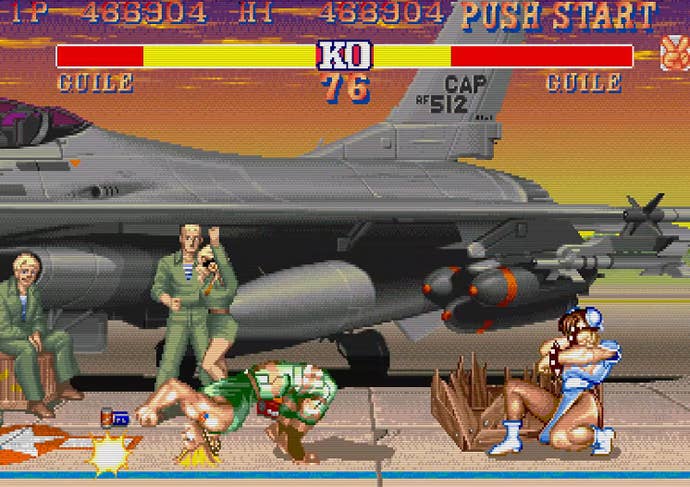
Accounts of this mystery game’s content varied, too. A Shoryuken would also release multiple Hadoukens. Zangief could piledrive thin air and still do damage. Charge characters no longer had to charge, turning the likes of Vega/Bison into perpetual Psycho Crusher machines.
For once, none of it was playground myth. They were all true. In the following months I encountered several bizarre bootlegs that substantiated every wild claim I’d heard. They were all as borderline unplayable as they sounded.
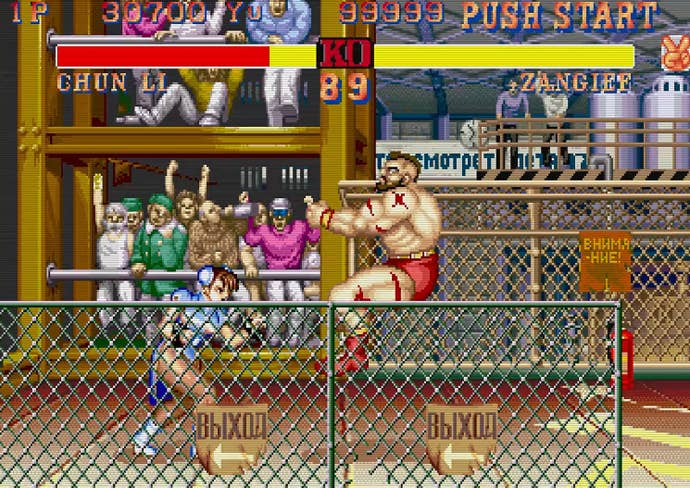
Street Fighter 2 Turbo: Hyper Fighting, Capcom’s official follow-up to CE, arrived soon after, boasting a speed increase and some familiar tweaks to character movesets. Mid-air hurricane kicks! Chun-Li had a fireball! Blanka could roll vertically! If you knew a secret code on the excellent SNES port, you could ramp up the speed to levels that made even Rainbow Edition feel pedestrian by comparison.
It felt as if Capcom had panned gold from the chaotic dirt of these counterfeit spin-offs. Years later, in Polygon’s excellent long feature Street Fighter 2: An Oral History, the influence was confirmed by James Goddard, former design consultant at Capcom USA and creator of Dee Jay.
“I got the fax out saying, "look, we need to do our own ROM upgrade to compete against these guys. We can kill them if it's balanced — it's spectacular but it's balanced. We can absolutely kill these illegals…”
It clearly worked. In the wake of SFII Turbo, the Rainbow Editions of this world felt as if they disappeared almost as soon as they’d appeared. Two further official updates arrived in relatively rapid succession, culminating in Super Street Fighter II Turbo, where fulfilling various criteria triggered a battle with the debuting Akuma, who was so wildly OP he would have fit right in with the Rainbow crowd. (Even the nerfed playable version is perma-banned from competition.)
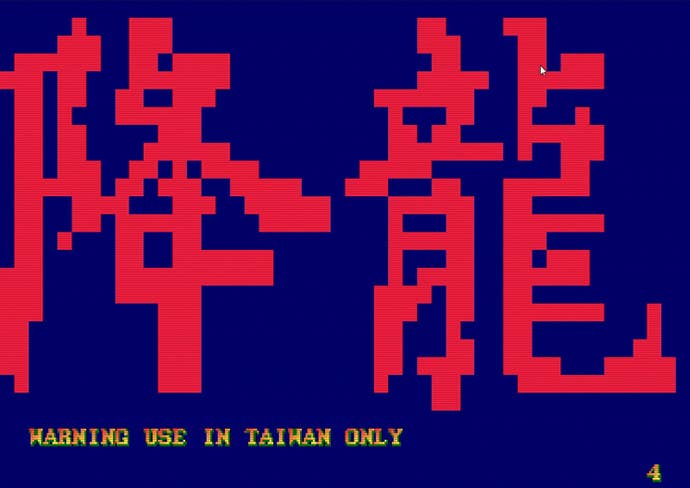
According to the International Arcade Museum, “Street Fighter II: Champion Edition (Rainbow)” is one of three SFII bootlegs created by the mysterious — and apparently very short-lived — hacking group Hung Hsi Enterprise TAIWAN. They clearly weren’t alone, either; popular emulator FBNeo has a staggering 67 bootleg variants listed for Champion Edition alone, with exotic subtitles like Xiang Long, Magic Delta Turbo, and Alpha Magic-F.
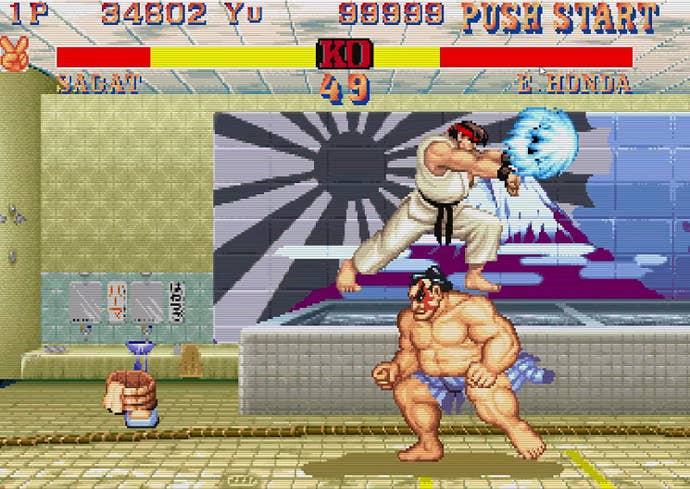
I’d wager that these Taiwanese bootleggers weren’t seeking to leave a lasting mark on the competitive fighting landscape so much as they were hoping to make a quick buck from the most successful coin-op of the time. Even so, it’s difficult not to draw a direct line from their wonky mod, through SFII Turbo, all the way up to the OTT action of X-Men: Children of the Atom and far beyond.
It’s fascinating to think what path Street Fighter II — not to mention every fighter influenced by its post-Turbo enhancements — might have taken had this wave of inventive forgeries never existed. As it stands, whether Capcom acknowledges it or not, these charmingly dysfunctional novelties will forever remain a formative element of the series’ enduring legacy.
Postscript: A mere 28 years later, an anonymous Brazilian team released Street Fighter 2 Mix, undoubtedly the most accomplished SF2 hack ever created. Unlike the hacks of old, this arguably improves on the original by embracing three decades’ worth of genre innovation — think perfect guards, throw escapes, backstepping, variable jumps — as well as reworking every character and implementing new custom animations to match.
If you’re tempted to check out Rainbow Edition or one of its many dodgy ilk, I’d recommend grabbing this lovingly crafted fangame instead.
*Names have been altered/fabricated to protect this writer’s failing memory
